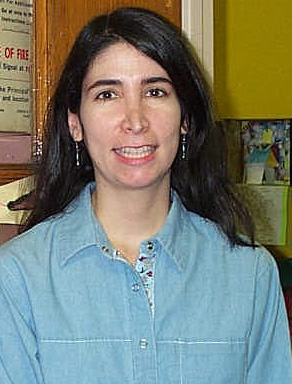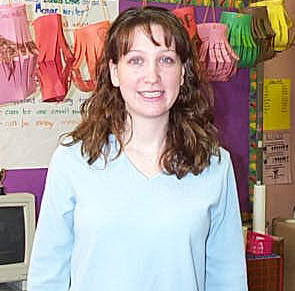How it works
This unit combines math concepts with
social studies content. The first-grade social studies curriculum includes the study of the community. It is important that children recognize that each part of the community, i.e., the fire station, police station, doctor's office, and so on, plays a vital role. First-grade children must realize that people fill these important roles, and without them, the community would not effectively function.
Prior to this study, students should visit a post office at least once and understand that people write letters to communicate with each other. Many trade books can be used to introduce students to the concept of letter writing, including Dear Mr. Blueberry by Simon James, Dear Fred by Susanna Rodell, and The Jolly Postman by Janet and Allan Ahlberg.
As a culminating activity for the yearlong community study, the children look forward to opening their own school-wide, student-run post office. Students in other grades also enjoy writing letters to friends and teachers, and the first graders have the important role of ensuring that this mail will be delivered in a timely manner.
As students operate their post office, they learn many math concepts and skills, such as the concept of money, keeping numerical records, counting and adding by fives, collecting money and making changes, and categorizing and sorting.
Different technology media are introduced and used to supplement and enhance this project. The project integrates most curriculum areas - social studies, literacy, math, and technology.
Goals and Objectives
-
To help children understand the important role the post office plays in their community.
-
To help children understand the process of mail delivery and the important jobs within the postal system.
-
To familiarize children with the value of money and to teach them to count change.
-
To give the children the opportunity to be an integral part of their school-wide community and understand the important role they can have.
-
To introduce children to the Internet and other technology media.
-
Learn to use the computer and various software to carry out their
study.
-
Learn to use other technology tools such as the digital camera and the scanner.
Standards Addressed by This Unit:
New York State's Learning Standards being addressed in this unit are that students will:
-
Use scientific inquiry to pose questions, seek answers, and develop solutions.
-
Access, generate, process, and transfer information
using appropriate technologies.
-
Understand and apply scientific concepts,
principles, and theories pertaining to the physical setting and living environment and recognize the historical development of ideas in science.
-
Apply technological knowledge and skills to design, construct, use, and evaluate products and systems to satisfy human and environmental needs.
-
Understand the relationships and common themes that connect science and
technology and apply the themes to these and other areas of learning.
-
Apply the knowledge and thinking skills of science and technology to address real-life problems and make informed decisions.
Software Materials Used:
-
Appleworks (WP and SS)
-
Kid Pix
-
scanner
-
digital camera
-
calculator
-
the Internet
Tips:
A visit to the local post office provides an orientation and motivation for the project. A visit to the USPS Website provides the initial
reference for children to decide on a "reasonable" postal rate for the School House
Post Office.
Lesson 1: How Mail Moves from One Place to Another
Lesson 2: Post Office Jobs
Lesson 3: Addresses
Lesson 4: Using Money
for the
School-Wide Post Office
Coming Together of the Lessons - Opening
and Running the School-Wide Post Office
Technology Supplementation Throughout the
Project
|

Both Barbara Cornell Chavez and Kimberly Lloyd are first grade teachers at P.S.1M in New York
Public School's Community School District Two in Manhattan.

Collaborator
Kathy Huey,
Community School District Two Technology Staff Developer
Subjects
social studies, literacy, math, technology
Class
periods to complete: 10 or more
Beginning Grade
Level: 1
Ending Grade Level: 2
|